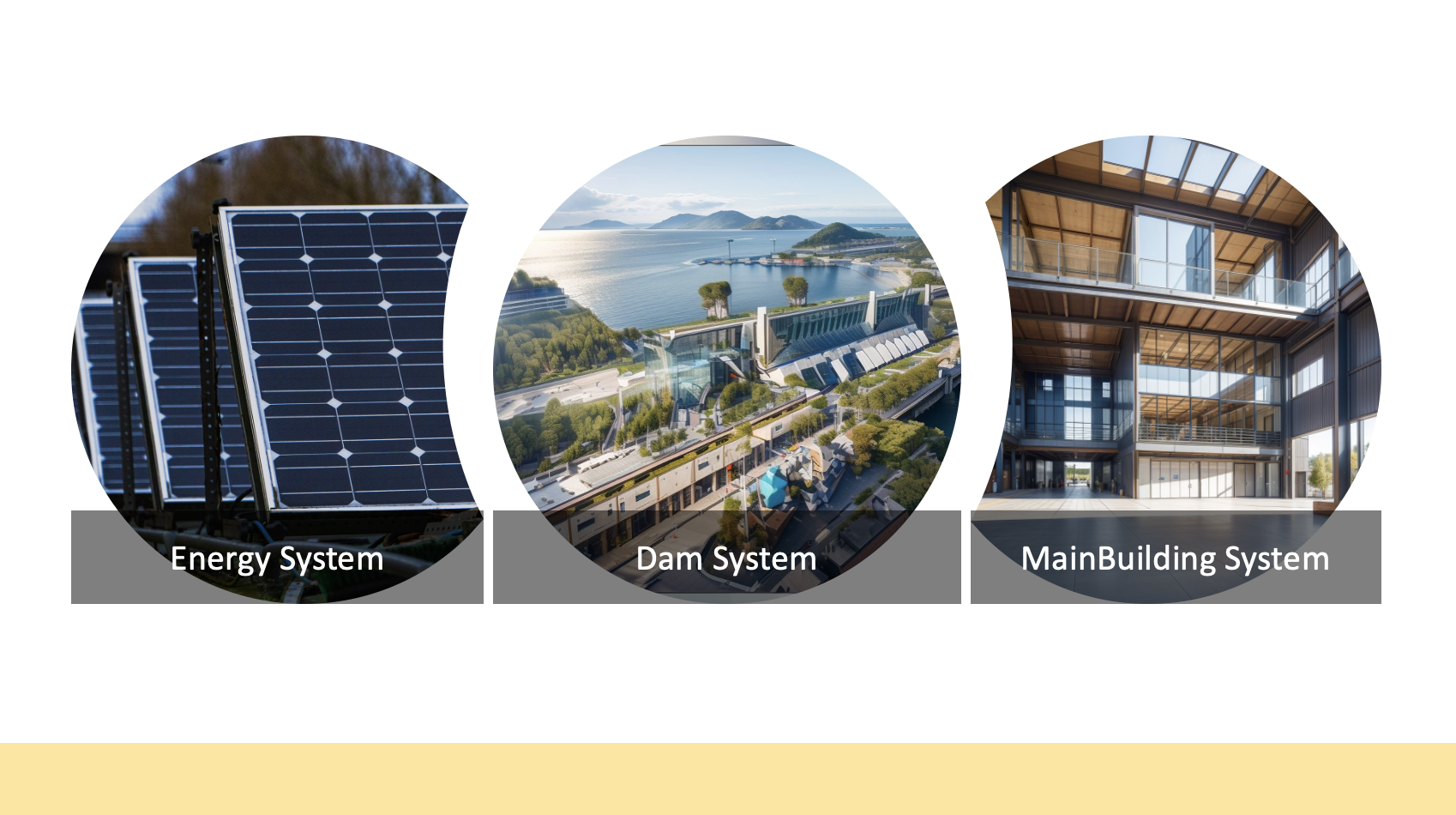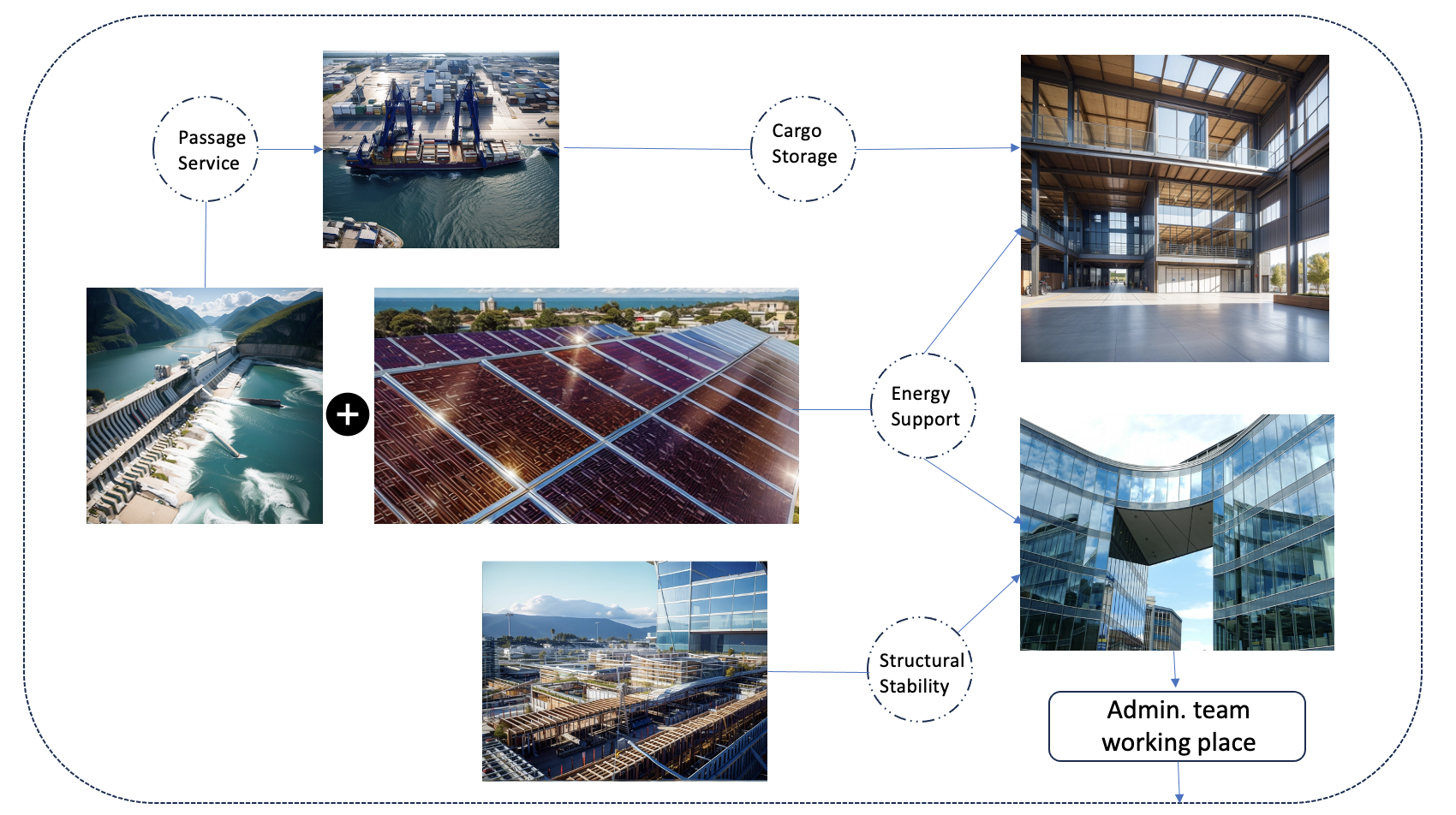The objective of this project integration is to establish a cohesive link between the Dam and adjacent structures, fostering a symbiotic relationship characterized by sustainability, functionality, and interconnectivity across the locality. Predominantly reliant on hydroelectric power generated by the dam and solar panels installed atop warehouse facilities, the area is geared towards renewable energy sources. Concurrently, to optimize water resource utilization, warehouses adjoining the port serve as storage facilities for cargo transported by passing ships. Additionally, the building infrastructure caters to the needs of the regional management team, providing amenities for dining, accommodation, and workspaces.
Main Functionns of Individual Systems
The integration of the six individual systems in this project aims to optimize functionality, connectivity, and sustainability.
Within our group, each individual system serves a distinct purpose:
1. a Dam System: offering hydropower and passage services for ships.
2. an Energy System: offering residential energy efficiency based on the residential building .
3. an RCC System: offering structure stability.
4. a Warehouse System: three warehouses offering storage and building service.
Categorize the Systems
To enhance integration among these separate systems and optimize system classification, we can broadly categorize them into three groups: the Dam System, the Energy System, and the Main Building System. By combining the Warehouse System, Residential Building System (here we use it as official building as well), and RCC Systems, we aim to promote internal collaboration and streamline the system’s unity. Finally, to facilitate the modeling of the entire system. Figure. 1 shows the three main systems in our case.

We conceptualized a Energy Efficient Dam Maintenance and Storage Facility, once we established the primary framework, predominantly comprising the aforementioned three categories, all interconnected and coordinated.
Interactions between Systems
Here are the main functions and how they interact and operate within their respective domains (Fig. 2):
1. The Dam System offers energy support to the Energy System through hydroelectricity generated by the dam. Additionally, it facilitates passage services for cargo ships, with their cargo stored in the Warehouse.
2. The Energy System ensures daily energy supply, such as lighting and HVAC, to both the Office Building and Warehouse within the Main Building System.
3. The RCC system within the Main Building System provides structural stability support to the Office Building (potentially also the Dam System in the future).
4. The Warehouse System caters to cargo storage functions for the Dam System, while rooftop solar panels supply energy to the Energy System.
5. The Office Building System serves as the operational and management hub for staff working within the whole project.
